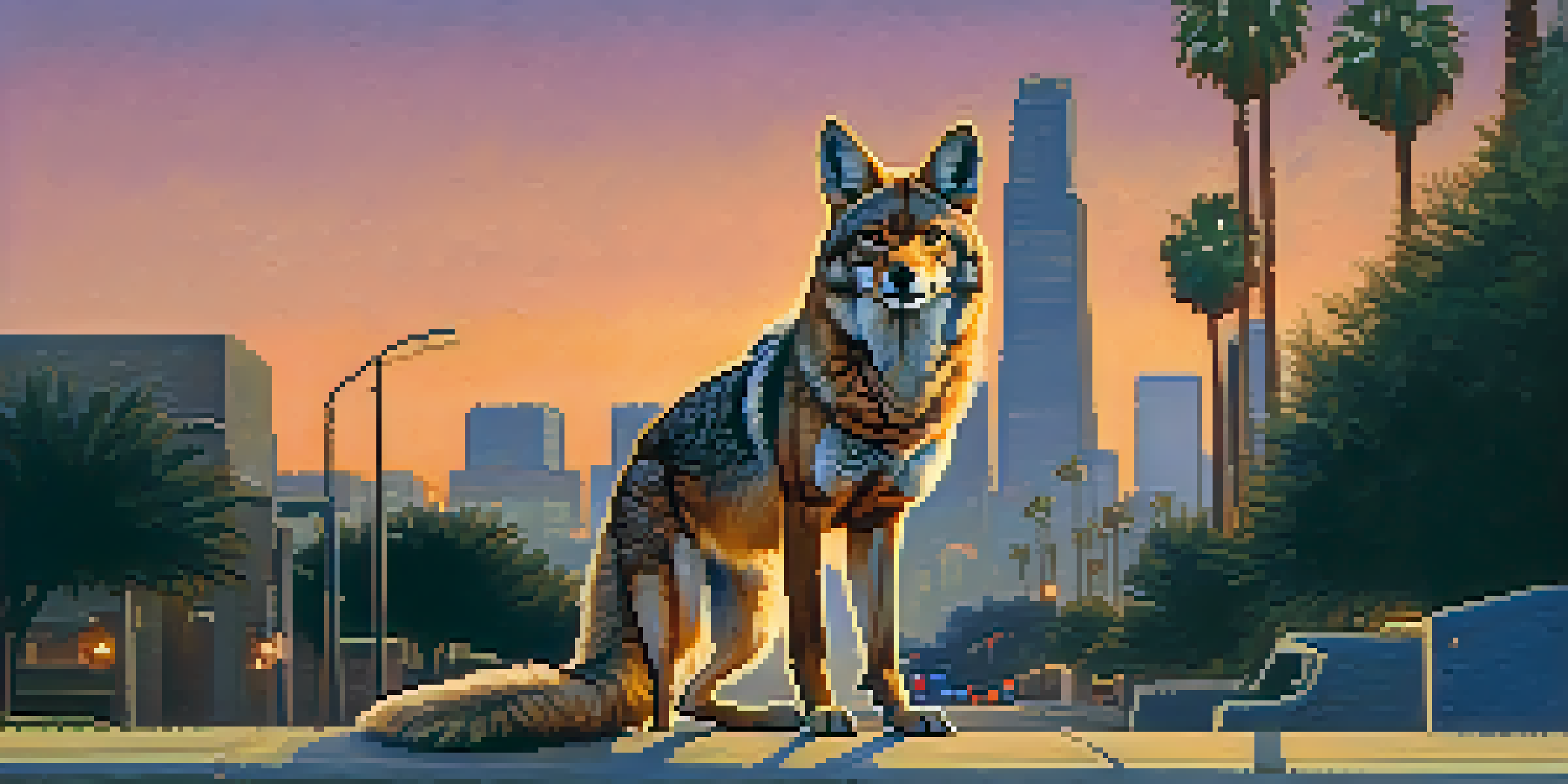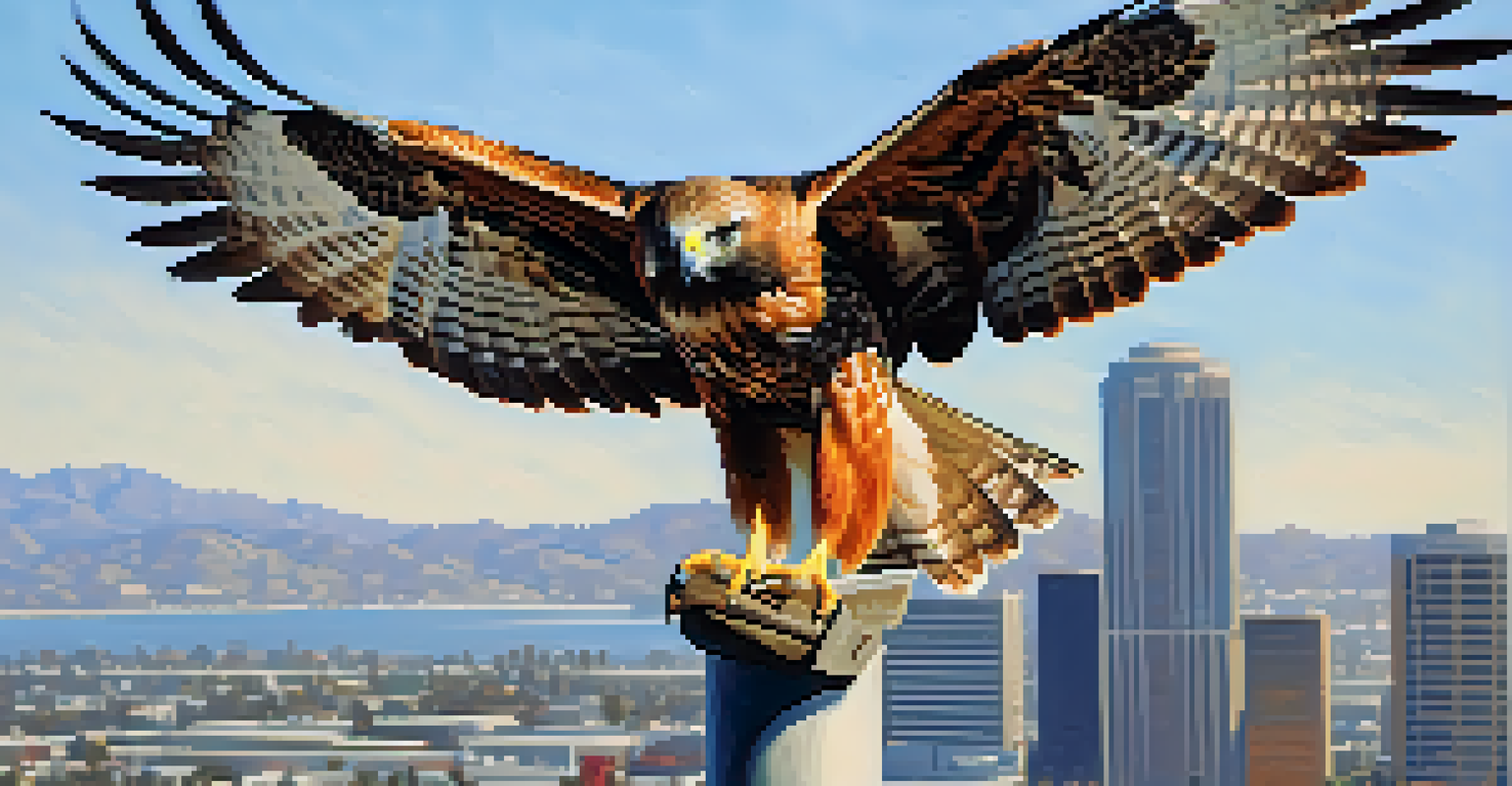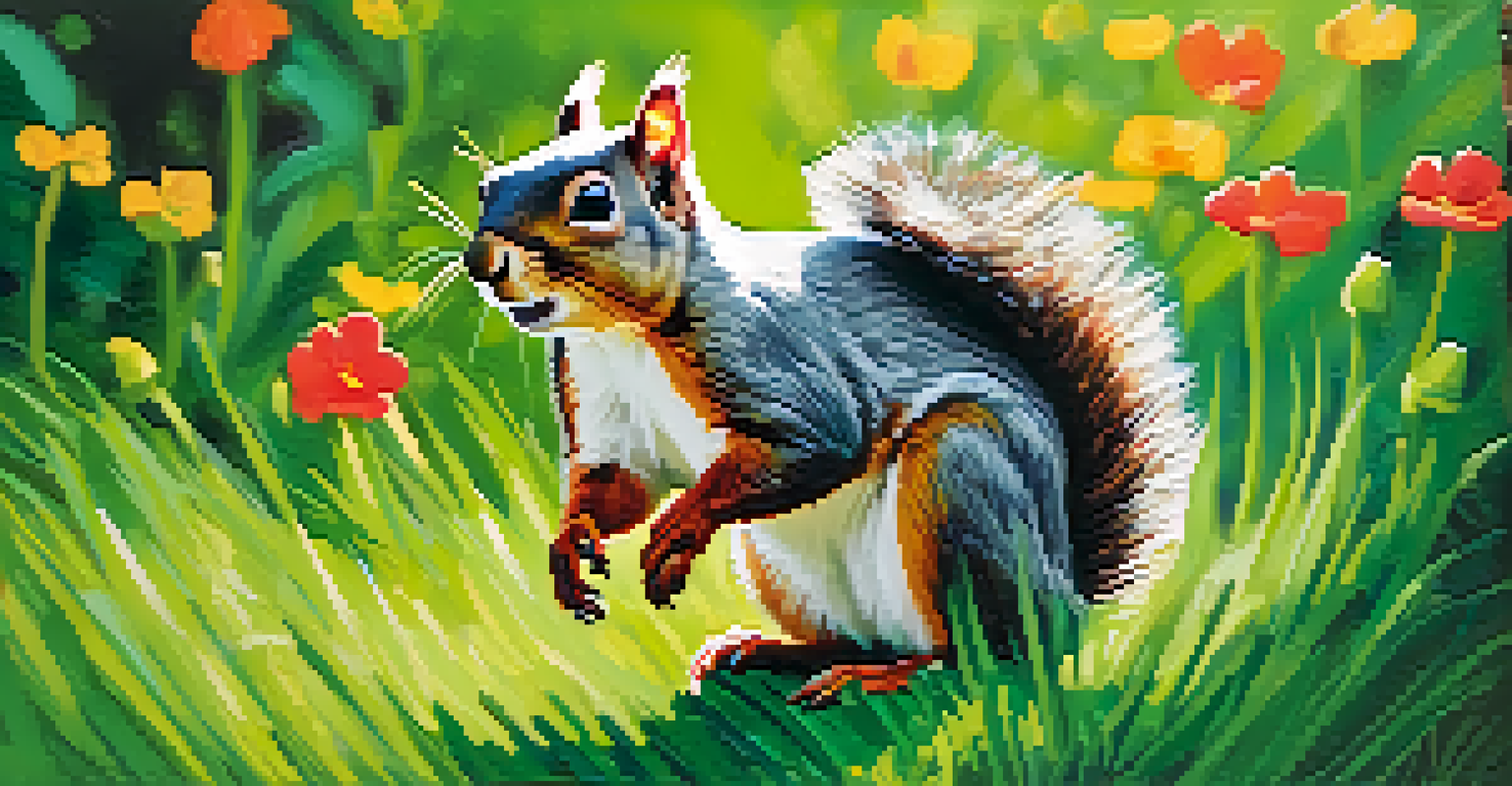Top 10 Wildlife Species Found in Los Angeles Urban Areas

Coyotes: The Urban Survivors of Los Angeles
Coyotes are perhaps the most recognizable wildlife species in Los Angeles. They have adapted remarkably well to urban environments, often spotted in parks, residential areas, and even on city streets. Their ability to thrive in a city setting highlights their resourcefulness and adaptability.
In every walk with nature one receives far more than he seeks.
These canines are not only skilled hunters but are also opportunistic feeders, which means they can survive on a varied diet that includes small mammals, fruits, and even discarded human food. This adaptability is key to their survival amidst the hustle and bustle of city life. They often seem to be unfazed by human presence, adding a unique dynamic to the urban landscape.
While sightings can be startling, it's important to remember that coyotes play a crucial role in the ecosystem by controlling rodent populations. Observing them can be a fascinating experience, and it reminds us of nature's resilience in even the most unexpected places.
Red-tailed Hawks: Majestic Raptors in the City
The red-tailed hawk is another remarkable species that has made Los Angeles its home. These beautiful birds of prey can often be seen perched on lampposts or soaring high above the city, scanning for their next meal. Their presence serves as a reminder that nature and urban life can coexist harmoniously.

Known for their striking plumage and distinctive red tail, red-tailed hawks are skilled hunters, primarily feeding on small mammals and birds. Their keen eyesight allows them to spot prey from great distances, making them effective hunters even in an urban setting. This adaptability to city life showcases the resilience of wildlife.
Urban Wildlife Thrives in L.A.
Coyotes, raccoons, and bats showcase remarkable adaptability, thriving alongside human activity in the vibrant city of Los Angeles.
For birdwatchers and nature enthusiasts, spotting a red-tailed hawk can be an exhilarating experience. Their calls echo through the canyons and parks of Los Angeles, reminding us of the wild beauty that exists alongside our urban environment.
Bats: The Nighttime Inhabitants of L.A.
Bats are often misunderstood creatures, but they play a vital role in maintaining the ecological balance in urban areas. Los Angeles is home to several bat species that can be seen flitting about at dusk, hunting for insects. Their nocturnal habits make them fascinating to observe, though they often go unnoticed by the average passerby.
The greatness of a nation and its moral progress can be judged by the way its animals are treated.
These agile flyers can consume thousands of insects in a single night, helping to control pest populations. Their presence is particularly beneficial in urban settings, where insect pressure can be high. By keeping things in balance, bats contribute to healthier ecosystems and reduce the need for chemical pest control.
In addition to their pest-eating prowess, bats also serve as important pollinators for various plants. So next time you catch a glimpse of a bat in flight, remember that these creatures are not just spooky; they are crucial allies in our urban ecosystem.
Squirrels: The Playful Residents of Parks
When you think of urban wildlife in Los Angeles, squirrels are among the first species that come to mind. These energetic little creatures can be seen darting around parks, gardens, and even city streets. Their playful antics and curious nature make them a favorite among both locals and visitors alike.
Squirrels are incredibly adaptable and can thrive in various environments, from lush parks to urban backyards. They primarily feed on nuts, seeds, and fruits, often foraging in trees and on the ground. Their resourcefulness in finding food ensures that they can survive in the concrete jungle.
Birds of Prey in the City
Red-tailed hawks and peregrine falcons exemplify the coexistence of majestic raptors with urban life, highlighting nature's resilience.
Watching squirrels as they scurry about can be a delightful experience, especially as they engage in playful chases or ingeniously navigate obstacles. They remind us to appreciate the small joys of nature, even in the heart of a bustling city.
Raccoons: The Mischievous Night Explorers
Raccoons are often viewed as the cheeky bandits of the animal kingdom, and in Los Angeles, they have become quite adept at thriving in urban environments. These nocturnal creatures are easily recognizable by their distinctive black masks and bushy tails. Their adaptability to city life has made them a common sight in many neighborhoods.
Known for their cleverness, raccoons are notorious for rummaging through trash cans in search of food. Their dexterous front paws allow them to open containers, leading to amusing encounters with residents. Despite their reputation for mischief, raccoons play an important role in urban ecosystems by helping to control insect and rodent populations.
While they may sometimes be seen as pests, raccoons are fascinating creatures that showcase the wild side of urban life. Observing their antics can be entertaining, reminding us that wildlife is all around us, even in the most unexpected places.
Coyotes: The Urban Survivors of Los Angeles
Coyotes are perhaps the most recognizable wildlife species in Los Angeles. They have adapted remarkably well to urban environments, often spotted in parks, residential areas, and even on city streets. Their ability to thrive in a city setting highlights their resourcefulness and adaptability.
These canines are not only skilled hunters but are also opportunistic feeders, which means they can survive on a varied diet that includes small mammals, fruits, and even discarded human food. This adaptability is key to their survival amidst the hustle and bustle of city life. They often seem to be unfazed by human presence, adding a unique dynamic to the urban landscape.
Colorful Wildlife Enriches Urban Spaces
Western bluebirds and playful squirrels remind us of the beauty and joy that diverse wildlife brings to urban gardens and parks.
While sightings can be startling, it's important to remember that coyotes play a crucial role in the ecosystem by controlling rodent populations. Observing them can be a fascinating experience, and it reminds us of nature's resilience in even the most unexpected places.
Peregrine Falcons: The Fastest Birds in the City
Peregrine falcons are renowned for being the fastest birds in the world, reaching speeds of over 240 miles per hour during their hunting dives. In Los Angeles, these incredible raptors have adapted to urban life, often nesting on skyscrapers and tall buildings. Their remarkable presence in the city highlights the unique relationship between wildlife and urban development.
Primarily hunting pigeons and other birds, peregrine falcons have found an abundant food source in the city's bustling avian population. Their sharp eyesight and incredible speed make them efficient hunters, showcasing the beauty of nature's design even in a concrete jungle. Spotting a peregrine falcon in flight is a breathtaking experience, a reminder of the wild wonders that exist in urban areas.

Conservation efforts have played a significant role in the resurgence of peregrine falcons in urban settings. Once endangered, these majestic birds are now a symbol of resilience, demonstrating how wildlife can thrive alongside human activity.
Western Bluebirds: Colorful Visitors to Urban Gardens
Western bluebirds are a delightful sight in Los Angeles, bringing vibrant color to urban gardens and parks. These small birds are known for their striking blue feathers and cheerful songs that can brighten anyone's day. Their presence adds a touch of nature's beauty to the city landscape.
Often seen flitting between trees and shrubs, western bluebirds primarily feed on insects and berries. Their ability to adapt to urban environments means they can often be spotted in gardens and grassy areas, where they hunt for food. Their cheerful chirping is a pleasant reminder of the diverse wildlife that exists even amidst the city hustle.
For birdwatchers and nature lovers, encountering a western bluebird can be a joyful experience. These colorful visitors serve as a reminder of the importance of preserving green spaces in urban areas, ensuring that wildlife continues to thrive.